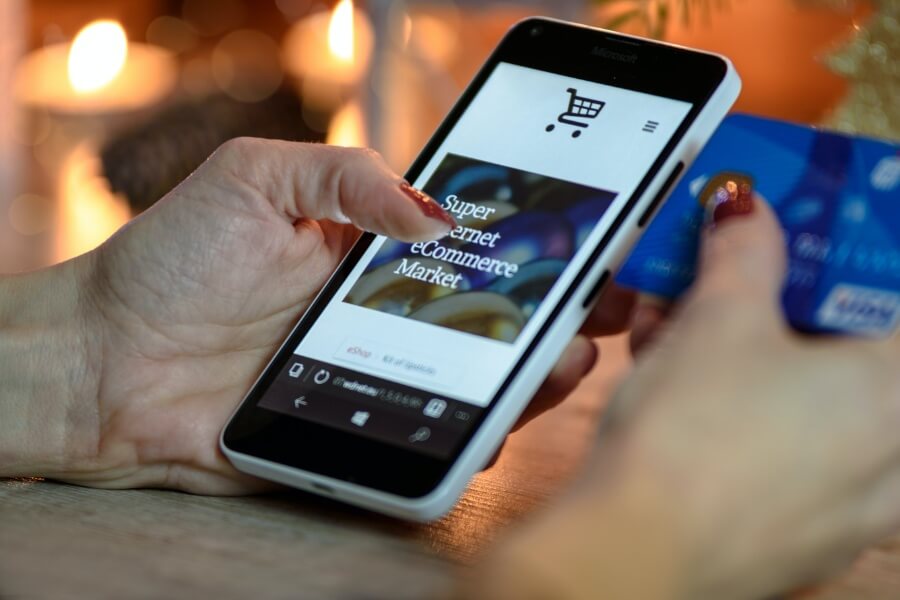
In today’s digital age, eCommerce has become an integral part of businesses. Companies of all sizes and types are relying on online sales to reach a wider audience and generate revenue. However, with the rise of eCommerce, competition has also become fiercer. To stay ahead of the competition, businesses are constantly looking for ways to improve their eCommerce marketing strategies. One way to stand out in the crowded online market is through the use of graphic design.
Graphic design is the art of creating visual content to communicate a message. In eCommerce, graphic design plays a critical role in capturing the attention of potential customers and converting them into buyers. Let’s take a closer look at some of the ways graphic design is used in eCommerce marketing.
1. Brand Identity
Brand identity is one of the most important aspects of e-commerce marketing. A strong brand identity helps businesses to establish their unique personality, values, and image. Graphic design plays a significant role in creating a brand identity. Elements such as logos, typography, color schemes, and imagery are all essential components of a brand identity. A well-designed brand identity can help businesses to stand out in a crowded market, increase brand recognition, and establish a connection with their target audience.
When creating a brand identity, graphic designers need to consider the target audience and the business’s goals and values. The brand identity should be consistent across all marketing channels, including the website, social media, and email marketing. A cohesive and visually appealing brand identity can help businesses to build trust and credibility with their audience, leading to increased sales and revenue.
2. Website Design
The design of an e-commerce website is a crucial aspect of marketing. The website design should be visually appealing, easy to navigate, and responsive across different devices. A well-designed website can significantly impact the user experience and influence purchasing decisions.
Graphic designers can create website designs that are optimized for sales. They can use visual cues such as color, typography, and imagery to guide visitors towards specific products or promotions. They can also create engaging product pages that showcase products in the best possible light and encourage customers to make a purchase.
When designing an e-commerce website, graphic designers need to consider the user experience. The website should be easy to navigate, with clear calls to action that encourage visitors to make a purchase. The website design should also be consistent with the brand identity, with a cohesive color scheme and typography.
3. Product Photography
Product photography is an essential aspect of e-commerce marketing. High-quality product images can help customers understand the product better and make informed purchasing decisions. Product photos can also showcase the product’s features, benefits, and quality.
Graphic designers can create product photography that is visually appealing and consistent with the brand’s overall image. They can also use photo editing tools to enhance the product’s appearance and make it more attractive to potential customers. For example, a graphic designer might add shadows or highlights to a product photo to make it stand out.
When creating product photography, graphic designers need to consider the target audience and the product’s features and benefits. The product photos should be visually appealing and showcase the product in the best possible light. The product photos should also be consistent with the brand identity, with a cohesive color scheme and typography.
4. Social Media Marketing
Social media has become a powerful tool for e-commerce marketing. Platforms such as Facebook, Instagram, and Twitter can help businesses reach a wider audience and engage with customers in real-time. Graphic design plays a critical role in creating social media posts that are visually appealing and shareable.
Graphic designers can create social media posts that are optimized for each platform’s specific requirements. They can use visual elements such as images, videos, and infographics to convey a message or promote a product. They can also use design techniques such as typography and color to make social media posts more engaging and shareable.
When creating social media posts, graphic designers need to consider the platform’s audience and the business’s goals
5. Email Marketing
Email marketing is another important aspect of eCommerce marketing. Emails can be used to promote products, inform customers about sales or promotions, and build relationships with customers. Graphic design can help make email marketing more effective by creating visually appealing emails that capture the reader’s attention.
Graphic designers can create email templates that are consistent with the brand’s overall image. They can also use visual elements like images, icons, and color to make emails more engaging and easy to read. They can also design calls-to-action that encourage readers to click through to the website and make a purchase.